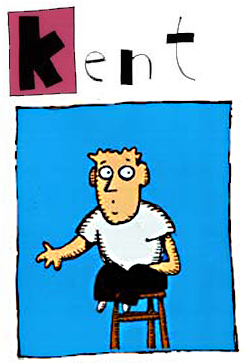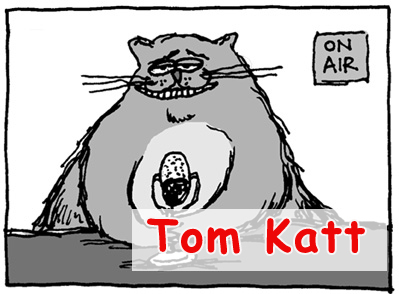Wednesday, March 25, 1998
BAHIA LOS FRAILES, BCS, MEXICO -- "Eighty-eight pounds, eight feet, seven inches. Fought it for four hours on 25-pound test line. Prettinear swamped the boat gettin’ it in." Merle was talking about the marlin she had recently caught. She also casually mentioned the 20-pound tuna and 20-pound wahoo that had made it into her 1997/98 fishing diary.
Merle is 76 and not a bit defensive about her age. She is small, but certainly not petite, with strong hands and a confident gait. A curly mat of white hair is plopped down on the top of her head. Crow’s feet merrily radiate from her alert eyes and she can become a bit disarming when one sees her going about her business without glasses.
Merle and Roy have been coming to the Baja since the sixties- "Since back when the paved road ended just outside Ensenada," Roy adds. For the last 15 years they have been returning to this particular Baja locale, just south of Cabo Pulmo on the Sea of Cortez. Together they catch fish. (This morning their total: seven sierra. My total: nada.) He has declared it his personal responsibility to distribute any excess fish to the local ranchos. "They love it. They don’t have money for fresh fish, nor the means, and they get tired of eating beans and tortillas. In fact, the other day, I delivered some dorado to a family and they had it on the skillet before I was even out the door. All the ranchers around here know my name." For the four months Roy and Merle are camped on the beach, in the arroyo at Los Frailes, the rancho families probably get their fill of fresh fish. I have yet to hear of Merle and Roy getting skunked.
I met Roy and Merle last year at Merle’s 75th birthday party. It was held in the same "camp site" around a fire and was attended by almost everyone then camped at the beach at Los Frailes. This year, I missed her birthday celebration by a couple days. Their routine hasn’t varied much since last year. They arise in the morning before light and make a fire. They have their coffee and go fishing. They clean their fish and on the Honda four-wheeler, Roy makes his fish deliveries. For most of the day they putter around the neat living area. Come cocktail hour, friends drop by to share a beer and socialize. The day’s fish tally is compiled.
Today: Merle and Roy- 7 sierra
Don and his wife, Bernie- a needlefish, a bonito, and a very nice cabrilla
Paul and his girlfriend, Mary- two sierra
Gary- 15 dorados ("shoulda had a hundred.")
Peter and Zelda- one extremely beautiful dorado and a small leopard grouper.
Rene- didn’t go out. (Seems poor Rene has alienated himself from the other campers due to his political organizing in response to efforts by the nearby hotel to prevent people from camping on the beach. He has gone to La Paz to formally complain, which has only given the federal officials an excuse to come down to Los Frailes to busy themselves. The result has been visits by ornery federales and the enforcement of rules on the books but never enforced, such as proper permits, designated no-fire areas, motorized vehicle restrictions, and a 300-feet-from-the-water no-camping zone. The 300-foot demarcation is an official line drawn in the sand. "I’ve got no use for that little Frenchman," Roy murmurs when Rene’s name comes up in conversation. All this attention to legal details from a man who has no problems with using six fishing poles while trolling—when only one is allowed—and bragging about having six tuna on at a time and bringing them all in.)
Tonight Merle and Roy have invited me to pull up a chair around their campfire to share a cup of coffee. The Milky Way is a distinct white tire track across the sky. The ocean is dead calm with the lights of the boats moored in the bay bobbing in the blackness. Merle brings me a paper plate of fresh apple cobbler. From the radio the Oklahoma City oldies station, KOMA, fades in and out. Zelda curls up in the sand between Merle and the waning embers. Merle mentions that supper sure was good. Roy says, "Yes it was, Moma," and looks across at me. "That little piece of meat on the top of the dorado’s head, that’s her favorite."
-
Zelda’s diary
There is nothing better than camping. I’ve decided. Even with all the human food in the hotel, camping is the best. I get to sleep right outside where all the good stuff happens. I get to bark and protect the car. I can go in the car or sleep outside it, or under it, wherever I want. There are other dogs to smell and run around with. Sometimes I just go next door and hang out with the neighbors. They feed me. Sometimes they have cooler places to nap. Everyone loves me.
We get to ride in the car on the water. Zoom all around. It’s getting so that I can smell fish in the water. True. A lot of times the fish are right near the top. Sometimes there are tons of them. I can smell these! I start to bark. I’m trying to let Peter know that there are fish here. He seems to want them. They come right into the car with us. He puts them in a sack. I think we eat them. Anyway, when I smell them, I let him know.
Peter's diary
The daily jackhammering has stopped from the new hotel construction site across the street and the Hotel Posada Señor Mañana is once again seeped in a lazy quiet, no longer requiring me to retreat to the beach for a proper work environment.
Noting the progress of the construction project has been most entertaining. For the last ten days one man with a jackhammer--powered by a loud gasoline-fueled air compressor--blasted away a trench eight-feet deep along an existing foundation. From the looks of things, cement will now be poured into the trench. There is no cement mixer on the construction site. All the cement is mixed by hand, placed in five-gallon plastic buckets or containers of some sort—17-liter vegetable oil cans are a popular vehicle—and carried on workers’ shoulders to where the cement is needed. All day, like ants, there is a steady stream of workers carrying cement.
Mixing the cement is much like making homemade pasta. First, a pocket is made in the pile of cement mix into which water is added. Sand or gravel is then added. Once the correct texture is achieved it is scooped out with a shovel and loaded into the cans. The cement reservoir remains constant at about a 20-foot diameter pool. It is a quiet process.
I spent three days camping at Bahia Los Frailes, primarily to escape San Jose Days, which are now in mid-swing. (And there was the jackhammer thing). Because of the easy access to the water as well as its protected nature, Los Friales is a popular camping area favored by fishermen with small, trailerable boats. On the north end of the beach is Punta Los Frailes, which provides an efficient windbreak from the prevailing northerly winds. It is also home to a large sea lion colony. Upon my initial inspection, the number of sea lions had seemingly diminished from last year, an observation that was shared by other campers. Someone suggested the orcas were responsible for the population’s thinning, noting the regular sighting of whales along the point. Regardless of the numbers, the booming sound of sea lions often wafts into camp, adding another exotic factor into the tropical landscape.
From San Jose, the trip to Los Frailes is about a two-hour trip, the final ten miles being the only challenging section--the challenge being that of keeping your vehicle in one piece. This last ten-mile stretch of dirt road is famous for its bone-crunching, teeth-grinding, dust-raising, vehicle-jarring, screw-loosening, rock-hard washboard ridges. In the past, it has been solely responsible for the demise of bookshelves in my van. This is the north end of the East Cape Road, a 50-mile road that runs along the ocean between Cabo Pulmo and San Jose. (Cabo Pulmo and Los Frailes are normally approached from a roundabout route, driving north and looping back south on the paved roads versus the more direct all East Cape Road). This road is thankfully periodically graded, usually around Easter, when local Mexicans flock to the beaches, filling every accessible nook, cranny, and patch of sand along the entire 400 miles of Baja oceanfront between Todos Santos, on the Pacific, and La Paz. On this occasion, the road had been graded the day before my arrival, but with Prez Ja being towed behind the van, I still was able to travel no more than five to seven miles per hour.
The arroyo camping area at Los Frailes was packed full of long-term campers. For the most part this is a very congenial group; quick to come to the aid of any neighbor putting a boat in or taking a boat out of the water, while affording the opportunity for casual socializing. From this socializing, a very effective fishing information pipeline evolves, where tips on fishing hot spots and lures that are catching fish are actively passed along.
Every morning I fished from six to ten, zooming about the bay, venturing out as far as the wind and waves allowed. There was plenty of fish being caught, but I managed to land only one dorado and a small leopard grouper, which everyone there called a Clown Hawkfish. The sun was hot, but the continuous breeze that blew through the van kept me cool. I managed to get a good amount of work done during my stay—always an amazing revelation.
In our little beach community there was currently a bit of politicking going on. The hotel at the south end of the beach would like to evict the entire camping community, creating for itself a lovely, deserted stretch of sand for their guests. The camping community was resisting. The feds were called in. They informed the beach residents of the current laws, permits required, various regulations, and such. It was learned that come next year, if someone wants to camp within 300 feet of the water, they need to purchase a permit from La Paz. The cost of an annual permit is $1/square meter of camp space, which can get pricey, assuming an average "lot" being, say, 15 x 15. Surely the locals will raise a stink. Most likely, however, it will be just another one of those Mexican laws that is never enforced.
The San Jose del Cabo fiesta concluded last night. Along with Paco, Roxanna, Baby Mayal, Anni, Roberto, and Quenamaya, I ventured into the bowels of the giant street party. Quenamaya—6--tested her skill at rolling marbles into numbered holes. Six marbles. Total up the score for your prize. A score of 36 will get you a clock; 6 will get you a boom box. She and I rode the Dragon roller coaster together. Baby Mayal rode the Grand Prix tractor ride. Last year, Roberto and I took a wild ride on the Hammer—one of those rides that takes you upside down. Not this year…he was a bit hung over from the six or seven very large shots of tequila he drank the night before. He was hurting. Roxanna was looking for someone to go upside down with on the Chaos ride, so I joined her. It was a quick, rocking good time.
The fiesta is much like a typical American state fair. There are the deep-fried food stands, games of chance and skill, rides for the kiddies, as well as the more adventurous, a haunted house, arts and crafts and stuff for sale, as well as people walking around selling balloons and silly toys. Tecate beer seems to have a lock on the beer sales during the fiesta. As the night progresses more and more of the crowd are seen carrying beers around. Late night, there becomes a serious problem with drunken men looking for trouble. (The other night, my van was burgled, the thieves finding my spear gun sans spear. Assholes.)
While food booths are similar to those in state fairs, the food is not. Deep-fried plantains are a common food. Fresh strawberries and cream abound, as well as: home-made potato chips, fried bananas, individual pancakes with syrup, dried sweets, bags of nuts of all kinds. A common topping for popcorn is hot sauce, which I can only imagine making the popcorn disgustingly unappetizingly soggy.
There is an amazing event that goes on in the Midway—a sort of merchandise auction. All night long "auctioneers" assemble piles of kitchenware and blankets/clothing/linen that grow as more and more merchandise is added. The prices rise, but not as fast as the piles are compiled. Eventually someone decides that the entire stack is a sufficient value and accepts the eventual price. There are four of these auction actions and they are right next to each other in a row. The barking of pitchmen spills up and down the line, causing, for this observer, seemingly complete chaos. And it is LOUD! Big PA systems bookend each stage- concert-sized Peavey amps. Each site tries to drown out its neighbor. All night long a streaming eruption of generic voice blankets the town.
At the night’s end are fireworks. Every year there is a fire somewhere in town caused by the fireworks, which should not surprise anyone, given the ubiquity of palapa (palm frond) roofs found in any Baja town.
Like any state fair evening, it is a romantic time. Young couples are everywhere holding hands and smooching in the shadows. Boys and girls are on the prowl. The boys in their coolest, hippest duds, and the girls in their scantiest outfits, snake about. Bare midriffs and Nike products get prime exposure. For the rancheros in the area it is a time to come into town. They are easy to spot by their sun-bronzed completion and weather-beaten skin. The men sport their finest Stetsons and snakeskin cowboy boots and the women tidy dresses and skirts. Their regal demeanor denotes an almost formal affair.
Fiesta time in San Jose is always an entertaining extravaganza, but like a Minnesota winter, it is simply too long.























